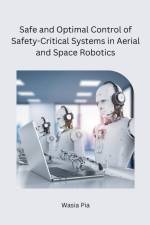av Wasia Pia
345,-
Safe and Optimal Control of Safety-Critical Systems in Aerial and Space Robotics" encapsulates a crucial and rapidly evolving field at the intersection of aerospace engineering, robotics, and safety assurance. In an era marked by increasing reliance on unmanned aerial vehicles (UAVs) and the burgeoning space industry, ensuring the secure operation of safety-critical systems is paramount.Aerial and space robotics have revolutionized industries such as agriculture, surveillance, and exploration, presenting numerous opportunities and challenges. These robotic systems operate in extreme environments where human intervention is often impossible, making their control and safety paramount.This field's primary objective is to develop control algorithms and methodologies that guarantee the safety and optimal performance of aerial and space robots. "Safe" in this context refers to the ability of these systems to operate without causing harm to themselves, the environment, or human life, even in the face of unforeseen challenges or system failures.Achieving safe and optimal control involves addressing a multitude of complex challenges. These include navigating through unpredictable terrains, managing power and resources efficiently, optimizing trajectories to conserve fuel, and handling contingencies like sensor failures or communication dropouts. Researchers and engineers in this field work on developing sophisticated control strategies, implementing redundant systems, and integrating advanced sensing and perception technologies to mitigate risks.The implications of this research are profound. In aerial applications, it can lead to more reliable drones for tasks like search and rescue, package delivery, and agricultural monitoring. In space exploration, it can enable autonomous and safe operations for planetary rovers, spacecraft, and even human missions to the moon, Mars, and beyond.

